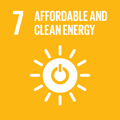- Docente: Marco Lorenzini
- Credits: 6
- SSD: ING-IND/10
- Language: English
- Teaching Mode: Traditional lectures
- Campus: Forli
-
Corso:
Second cycle degree programme (LM) in
Mechanical Engineering for Sustainability (cod. 5980)
Also valid for Second cycle degree programme (LM) in Mechanical Engineering for Sustainability (cod. 5980)
-
from Sep 16, 2024 to Dec 16, 2024
Learning outcomes
On completion of this course, the student will be able to calculate entropy generation and Energy losses in a thermodynamic/energy system; determinie conditions leading to minimal entropy generation in a system; make the necessary assumptions on system definition, operating conditions etc. required to carry out a consistent Energy analysis, suggesting possible improvements; calculate Energy content, reversible work, isentropic efficiency, Energy loss and irreversibility and energy efficiency for different parts of an energy system; apply the Energy analysis method to energy systems; calculate adiabatic flame temperature and Energy loss in combustion processes; determine the pinch temperature and the minimal required thermal load for a suitable industrial process; design heat exchanger networks according to the principles of pinch analysis; suggest measures to reduce heating and cooling needs in an existing heat exchanger network; evaluate pros and cons of traditional and renewable energy sources within the framework of sustainable energy use.
Course contents
Thermodynamic methods for efficient and effective energy use: entropy generation minimisation and
exergy analysis. Definition of exergy, dead state, thermodynamic equilibrium, reference conditions,
extended system and immediate surrounding, entropy generation in interface, entropy, energy and
exergy balance equations for closed and open systems, real work, useful work, surrounding work, and
exergy as state function. Equations for energy content and exergy change for closed system, open
system with stationary flow and heat exergy in the Carnot model. Exergy loss and energy
efficiency (Second Law Efficiency) for technological processes and cycles. Exergy analysis
for mixture and separation processes such as desalination and carbon dioxide separation. Exergy
analysis for combustion processes.
Exergy and sustainability.
Basic concepts such as pinch temperature, minimal need of external heating and cooling, composite
curves and GCC (Grand Composite Curve), exemplified through current research and literature.
Examples which illustrate either the design of a new system or suggestions for improvements of an
existing system.
Applications of exergy and pinch-point analyses to heat transfer equipment (heat exchangers,
thermal storage) and systems (heat pumps, thermal solar, [photovoltaics], district
heating and cooling, cogeneration and multigeneration),
with one different extensive example every year.
Readings/Bibliography
The courses follows two texts: "E.Michelides - Exergy Analysis for Energy Conversion Systems, Cambridge university Press, 2021" and "I. Kemp - Pinch Analysis and Process Integration, 2nd Edition,Butterworth and Heinemann, 2006", additional material will be made available on the Virtuale Platform.
Suggested readings:
- Kotas – The Exergy Method of Thermal Plant Analysis
- Bejan, Tsatsaronis, Moran - Thermal Design and Optimization
- Kemp - Pinch Analysis for Energy and Carbon Footprint Reduction
- Rutledge - Energy. Supply and Demand.
- Sala Lizarrga, Picallo-Lopez - Exergy Analysis and Thermoeconomics of Buildings.
Teaching methods
Instruction is in the form of lectures and exercises.
Assessment methods
Assessment is individual and based oral examinations consisting of a numerical problem and two questions pertaining on the subjects discussed during the lectures.
If students have a decision from Bologna University entitling them to Targeted Study Support due to a documented disability, the examiner has the right to give such students an adapted examination or to examine them in a different manner.
Successful completion of the course entitles to a grade from 18 (Pass) to 30 with Merit (Distinction); corresponding grades (e.g. Distinction/Pass with some Distinction/Pass) for international students may be awarded upon request.
Teaching tools
Numerical exercises during lectures. Blackboard, PC, projected slides.
All teaching material used in the lessons is made available on the online page of the course through https://virtuale.unibo.it
Office hours
See the website of Marco Lorenzini
SDGs


This teaching activity contributes to the achievement of the Sustainable Development Goals of the UN 2030 Agenda.
